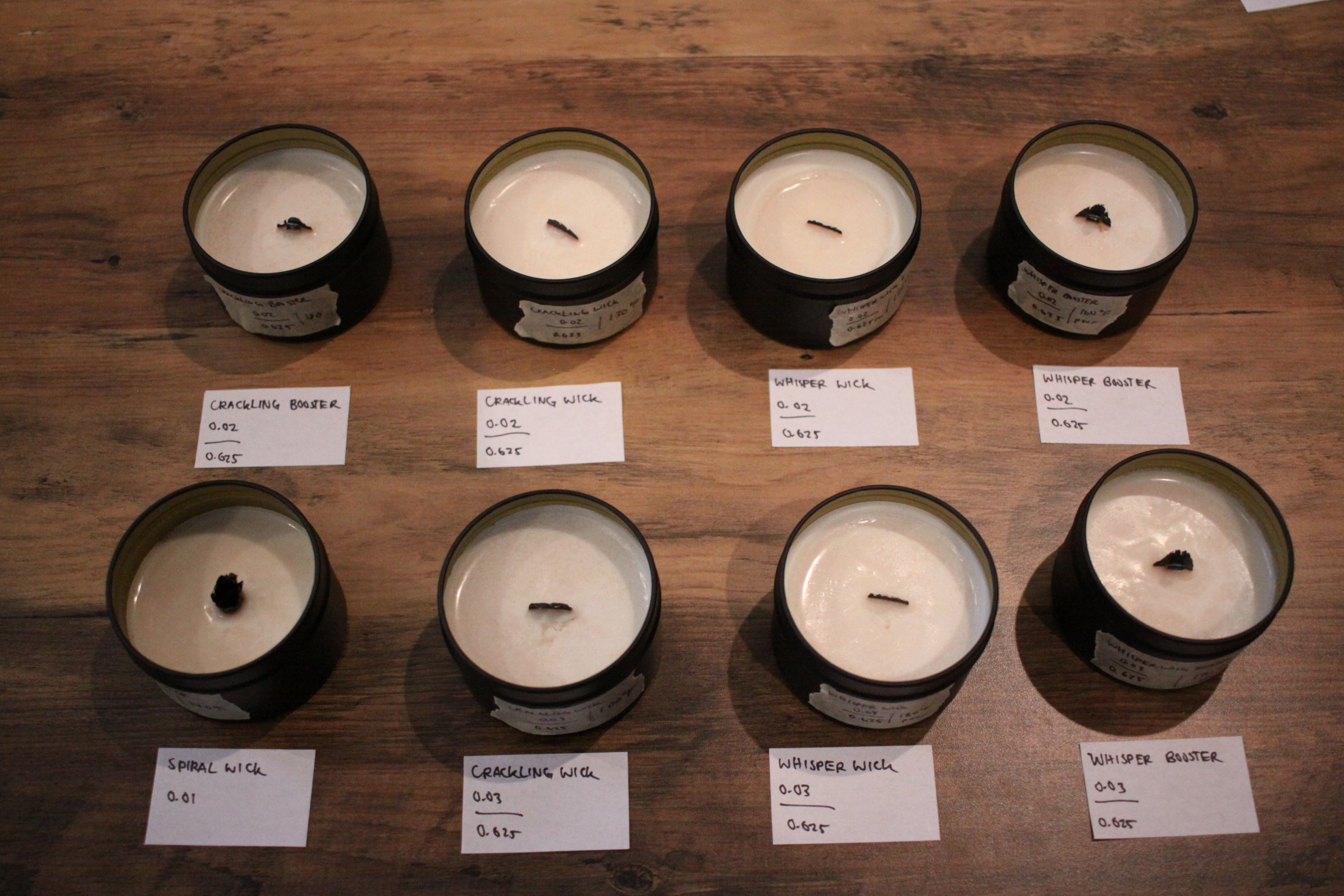Wick testing with Wooden Wick Co.'s Sample Kit
February 15, 2021 | 5 minute read
The Wooden Wick Co. offers a wooden wick sampling kit. I bought it thinking it’d be simple to figure out.
I was wrong.
There were different widths of wicks per wick type, different wick sizes per wood, and different shapes too! So to get a better understanding of each variant, I decided to test them.
To test every permutation would have been tedious, and very unnecessary. Therefore, I opted to keep the sizing of the tested wicks constant. Other than the spiral wick, all tested wicks had a width of 0.625”. For context, each type of straight wick (ie Crackling Booster, Whisper, etc.) came in different widths: 0.375”, 0.50”, 0.625”, 0.75”.
I also wanted to test each type of wick. There were 8 total, one of them being a spiral wick.
I set each wick in a 5oz tin container. The dimensions of the tins were 2.56” Diameter x 1.84” Height.
The wax I used was 464 Golden Boy Soy Wax, and I used it with no fragrance oil. I’ve been told that fragrance oil was important in the wick process, but I wanted to not introduce additional variants and I wanted to solely focus on the difference in output of the varying wicks. I’ll probably redo this test with added fragrance oil in the future.
Each candle was poured at a different temperature. In the screenshots, you can make out the exact temperature the wax was into the candle by inspecting the writing on the scotch tape. The pour temperatures ranged from 100F to 180F. I did this because I was curious about another assumption unrelated to the wicks.
After each candle cooled and settled, I let them cure for 24 hours before proceeding to burn. The candles were lit at the same time, and were lit for a total of 2.5 hours.
From running the test, what I learned were:
- The crackling wicks and whisper wicks were able to develop healthy melt pools.
- The non-booster whisper wick exhibited tunneling, and produced too small a flame for the vessel size.
- The addition of a booster wick made a visible difference. This can be seen by comparing the non-booster whisper wick against its booster counterpart.
- The 0.03 wicks produced a larger flame than the 0.02 wicks. This was exhibited in all the wick types.
- The crackling booster wick didn’t produce as large a flame as expected. Its flame was smaller than its non-booster counterpart.
- The spiral wick burnt fast and bright.
Hour 0:
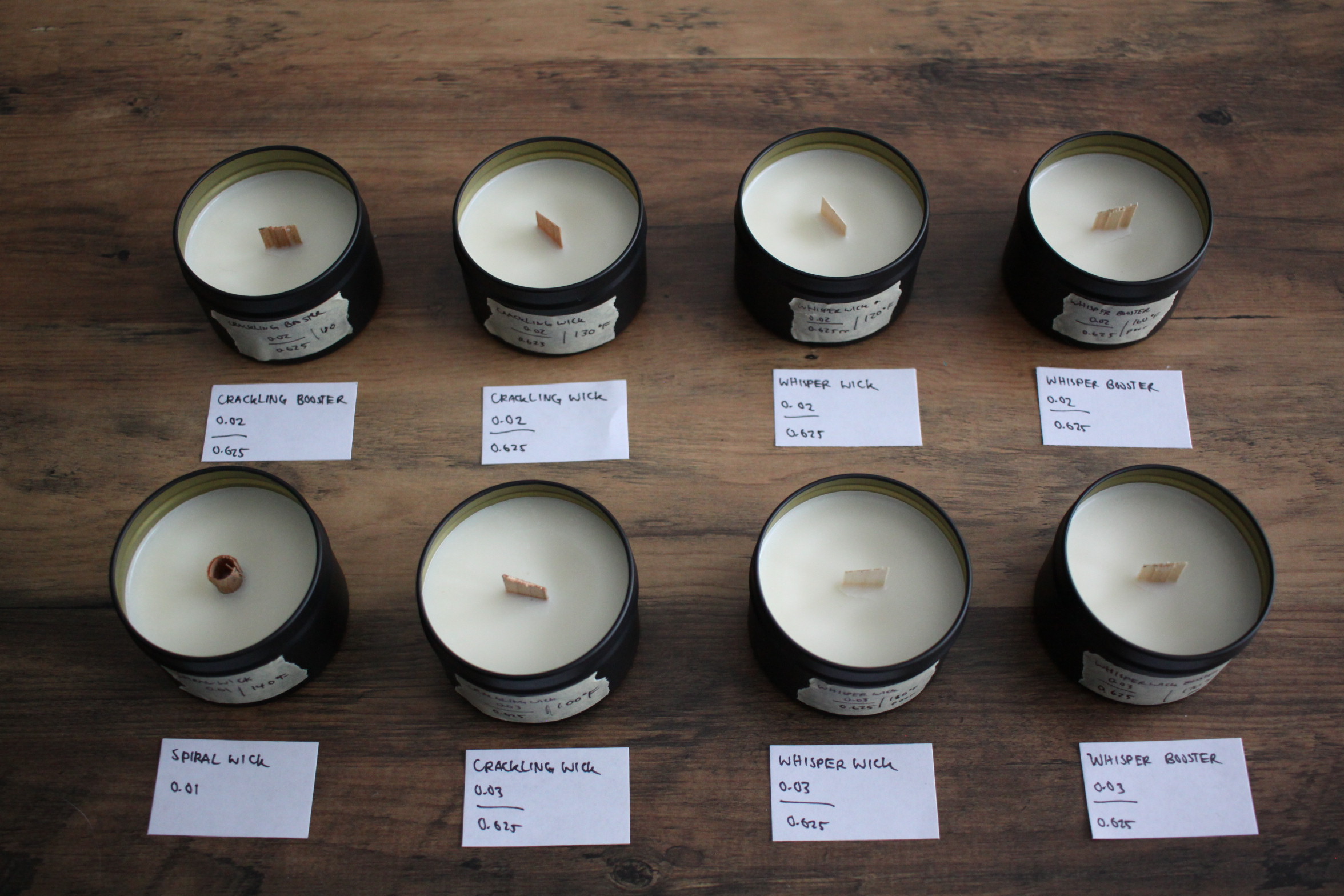
Hour 0.5:
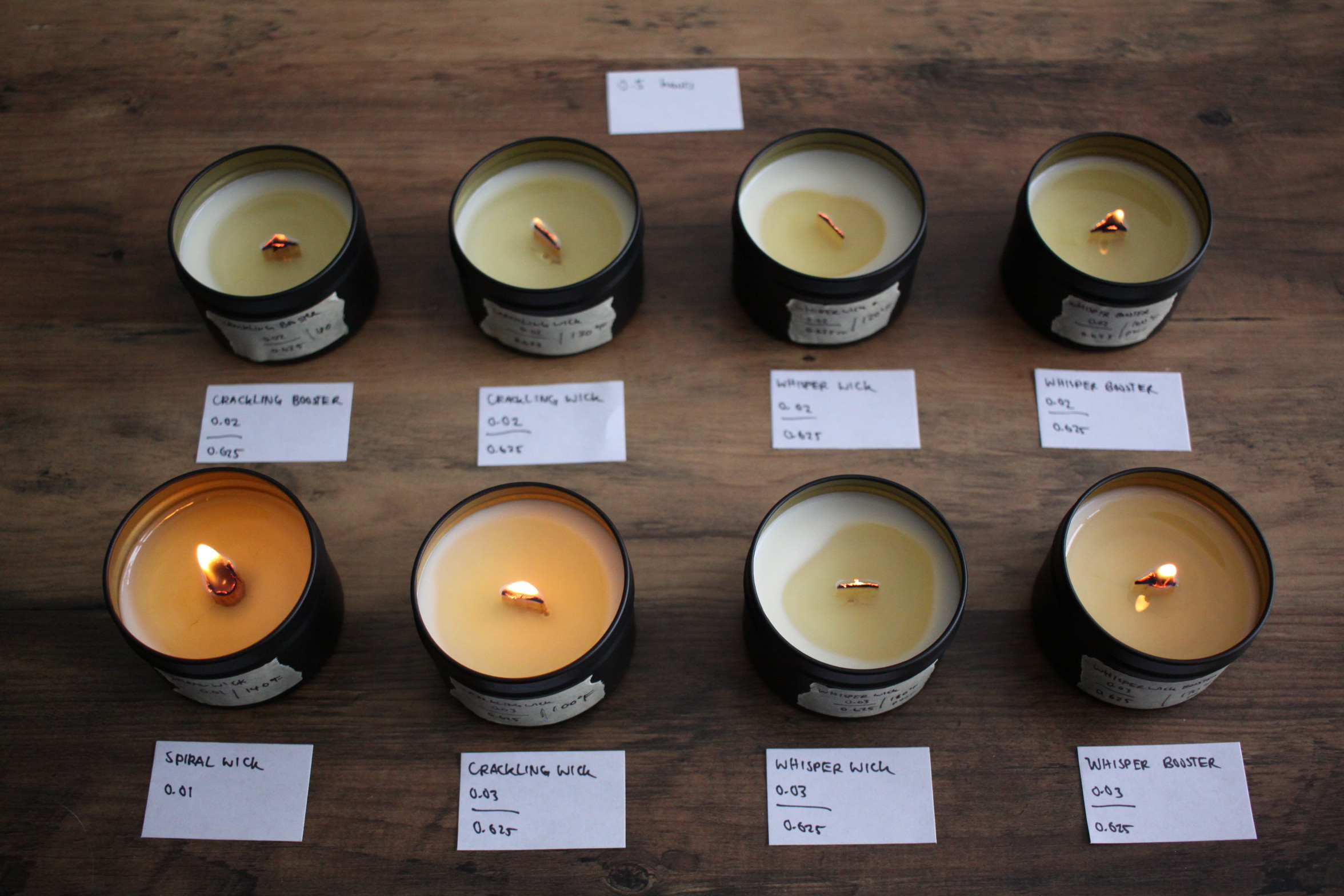
Hour 1:
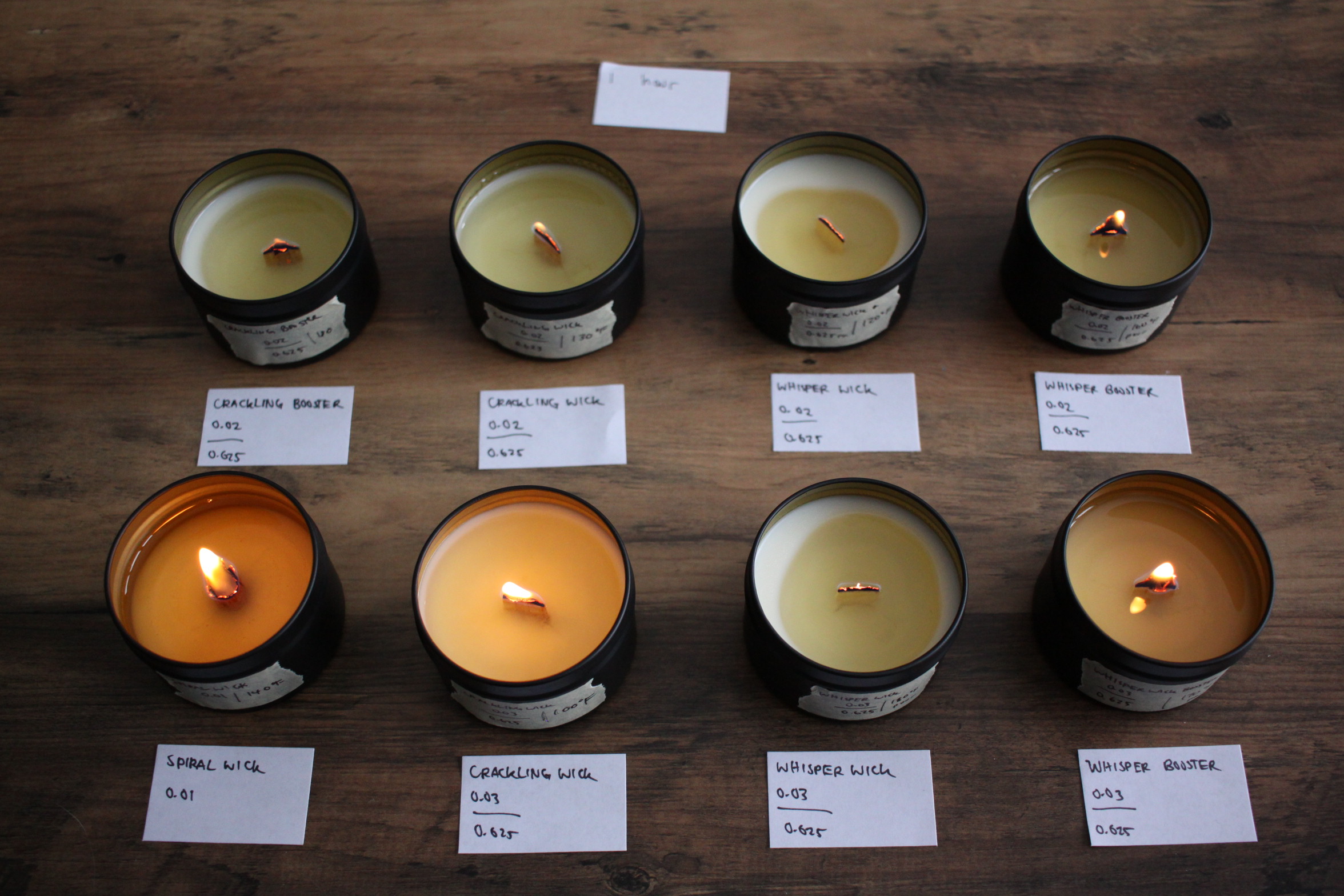
Hour 1.5:
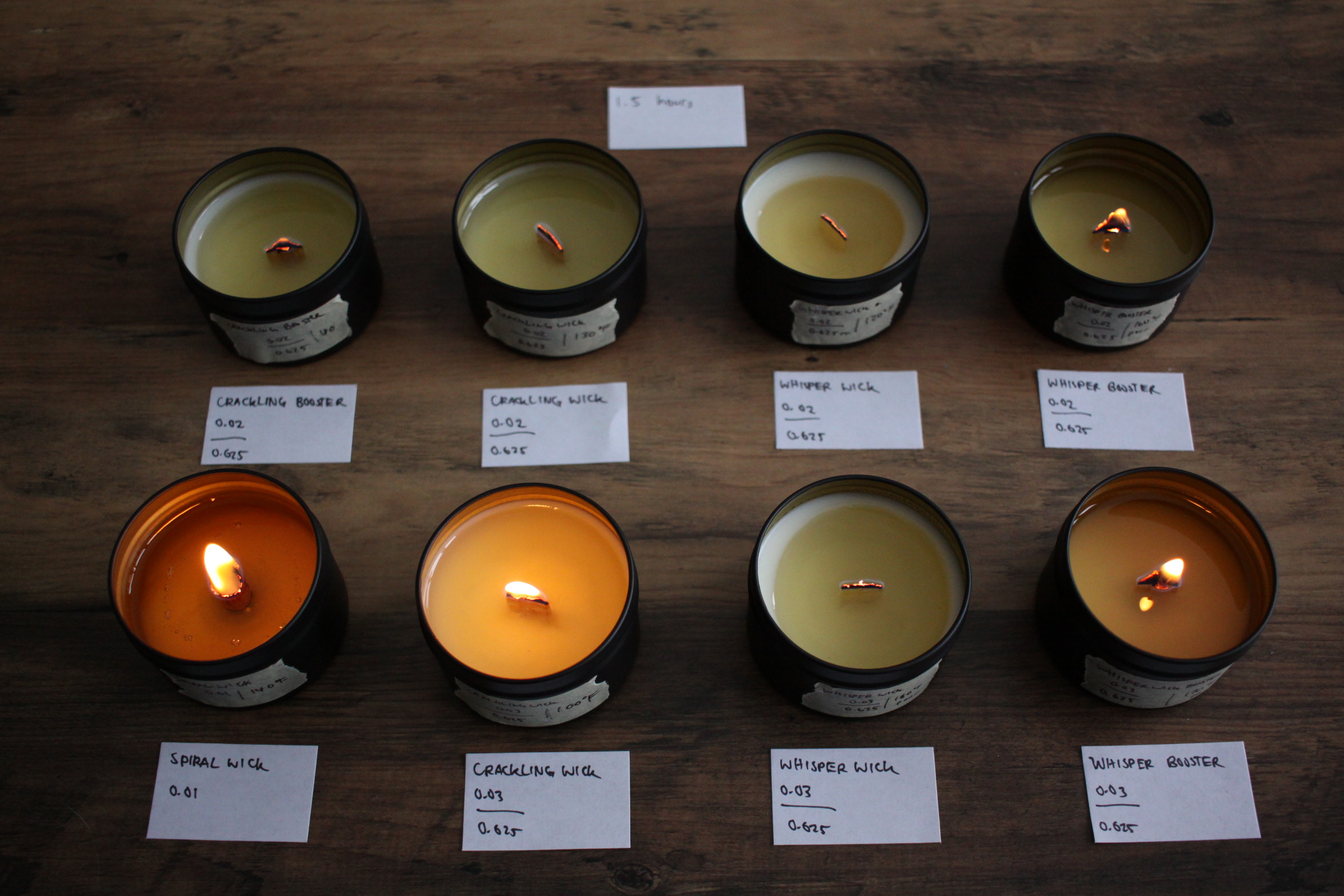
Hour 2:
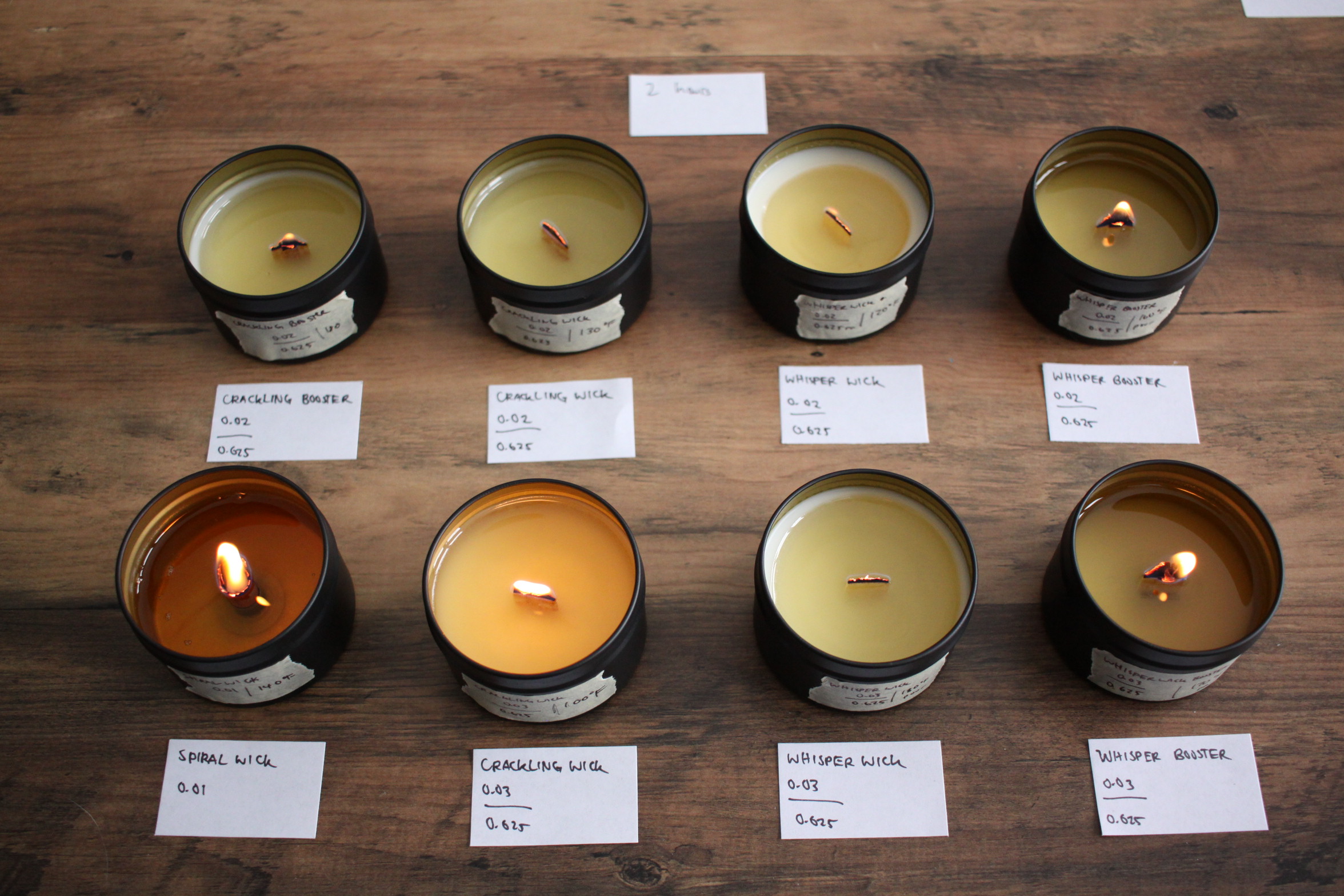
Hour 2.5:
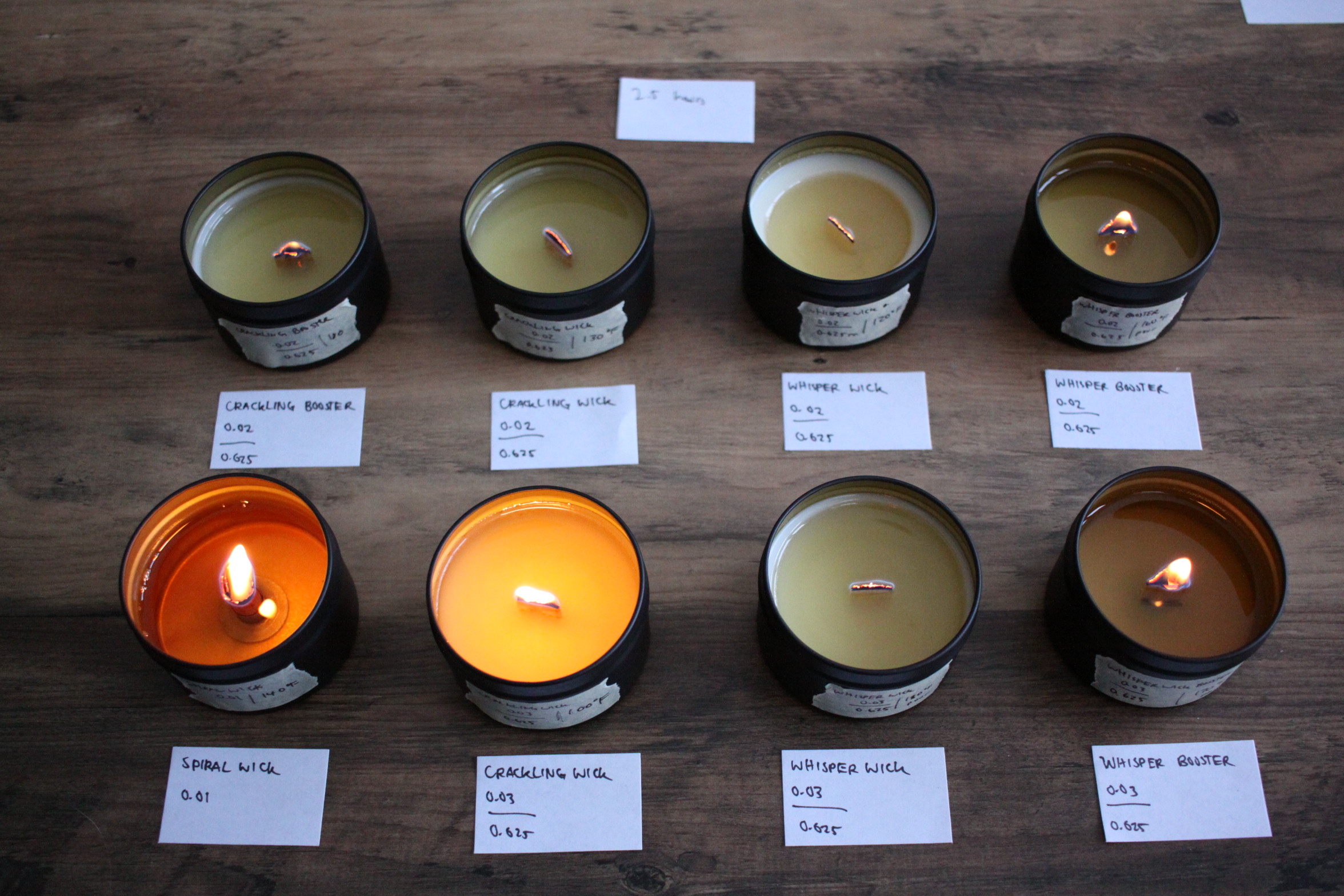
End:
